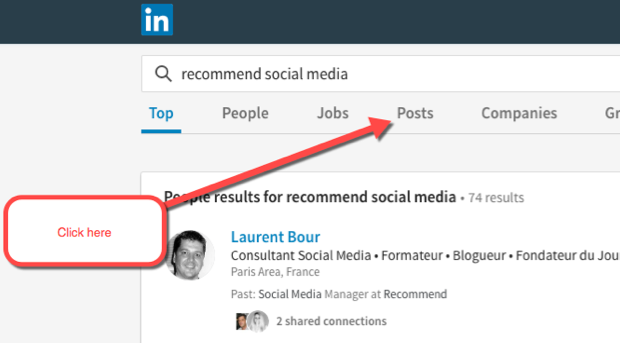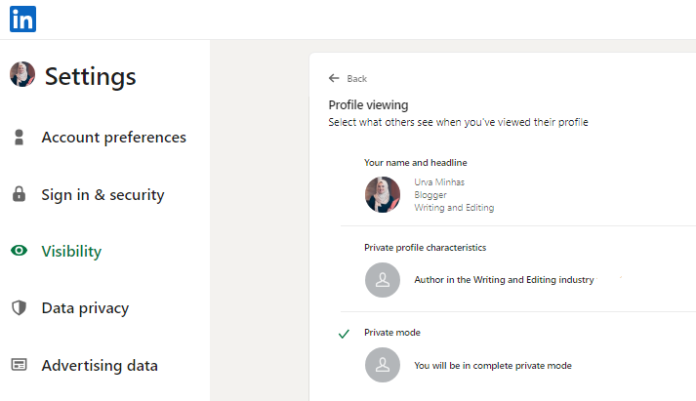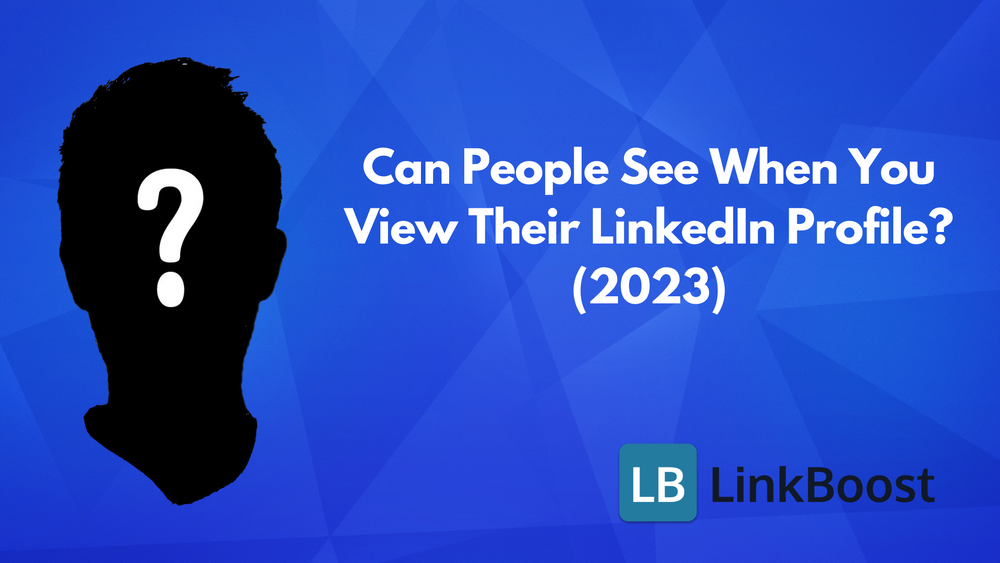In today’s digital age, understanding privacy settings on platforms like LinkedIn is crucial. With over 900 million users, LinkedIn stands out as a professional networking giant, but that also means your online activities can be quite visible. So, can people see when you search for them? The answer lies in the nuanced world of
LinkedIn offers a variety of privacy options that allow users to control who can see their profile and activities. This includes settings for profile visibility, search visibility, and even how others perceive your interactions on the platform. Adjusting these settings can significantly impact your networking experience. For instance, if you want to browse profiles anonymously, LinkedIn allows you to do just that by changing your visibility settings. However, it’s essential to understand the balance between being private and being connected in a professional setting.
Here are a few key privacy settings to consider:
- Profile Visibility: Control who can see your profile when you appear in search results.
- Search Visibility: Determine whether your profile is visible to people outside your network.
- Activity Broadcasts: Choose whether your connections can see your profile updates and activities.
By taking a moment to tailor your privacy settings, you can enhance your LinkedIn experience while keeping your professional life as private as you desire.
How LinkedIn Search Works

LinkedIn's search functionality is designed to help users connect, network, and find opportunities. But how does it work, and what does it mean for your privacy when you’re searching for someone? Understanding this can help you navigate your LinkedIn experience more effectively.
When you search for someone on LinkedIn, the algorithm considers several factors:
- Connection Level: The closer your connection to a person (1st, 2nd, 3rd degree), the easier it is to find them. First-degree connections are those you’re directly connected to, while second-degree connections are friends of your friends.
- Keywords: The search engine uses keywords from profiles, job titles, and company names to match your search terms. This means that the more complete and relevant your profile is, the more discoverable you become.
- Engagement: Profiles that receive more interaction are typically ranked higher in search results. This includes profile views, endorsements, and connections.
Now, regarding visibility, when you search for someone on LinkedIn, they may or may not know you’ve looked them up. If you have your profile set to “Public” or “Semi-Private,” they can see that you visited their profile. However, if you adjust your privacy settings to browse in “Anonymous Mode,” your search will remain hidden. This setting is particularly useful when you want to explore profiles without leaving a trace.
In summary, how you navigate LinkedIn search can significantly impact your networking opportunities and professional relationships. Understanding these nuances can empower you to use LinkedIn effectively while maintaining your desired level of privacy.
Also Read This: How to Avoid Extra Spaces When Copying from LinkedIn to Your Clipboard
Understanding Your Visibility When Searching

Have you ever wondered if people can see you when you search for them on LinkedIn? This is a common concern, especially if you're looking up potential employers, colleagues, or simply curious about someone. The truth is, LinkedIn has specific visibility settings that determine whether your searches are private or public.
When you search for someone on LinkedIn, your visibility largely depends on two factors: your account settings and the profile settings of the person you’re searching for. Here’s a quick breakdown:
- Public Profiles: If the person you’re searching for has a public profile, they may be notified of your visit, especially if you’re using a LinkedIn Premium account.
- Private Profiles: If their profile is set to private, they won’t know that you’ve searched for them, regardless of your account type.
- Your Account Settings: If you choose to browse in “Private Mode,” your searches remain anonymous. This is a great way to look up someone without them being aware.
It’s also essential to consider that if you interact with their profile—such as sending a connection request or viewing their posts—they might still infer that you’re interested in them. Being aware of these nuances can help you navigate your LinkedIn searches with more confidence!
Also Read This: How to See Who You Follow on LinkedIn: A Step-by-Step Guide
Adjusting Your Privacy Settings

Now that we’ve established how visibility works on LinkedIn, let’s dive into how you can adjust your privacy settings to control who sees your activity. Whether you’re looking to keep your searches discreet or simply want to manage your online presence better, here’s how to do it:
1. *Accessing Privacy Settings:
- Log in to your LinkedIn account.
- Click on your profile picture at the top right corner.
- Select “Settings & Privacy” from the dropdown menu.
2. Adjusting Profile Viewing Options:
- Under the “Visibility” tab, you’ll find options to control how others see your profile and activity.
- Look for “Profile viewing options” and choose among:
- Your name and headline: This shows your identity when you view profiles.
- Private profile characteristics: This option shows generic information about your profile without revealing your identity.
- Private mode: This makes you completely anonymous during searches.
3. Controlling Activity Broadcasts*:
- In the same “Visibility” section, you can manage whether your network sees updates, such as new connections or profile changes.
- Toggle the setting to “No” if you prefer to keep your actions discreet.
By taking a few minutes to adjust these settings, you can maintain the level of privacy you desire on LinkedIn while still leveraging the platform for networking and professional growth!
Also Read This: How to Delete a LinkedIn Message Safely
5. Best Practices for Maintaining Privacy on LinkedIn

LinkedIn is a powerful tool for networking and career advancement, but it’s essential to manage your privacy effectively. Here are some best practices to ensure your information remains secure:
- Adjust Your Profile Visibility: Go to your privacy settings and adjust who can see your profile. You can choose to make your profile visible only to your connections or even limit it to just your network.
- Control Your Activity Broadcasts: Turn off activity broadcasts if you don’t want your connections to be notified each time you update your profile or connect with someone new. This helps avoid unnecessary attention.
- Limit Connection Requests: Be selective about who you connect with. Only accept requests from people you know or those who can genuinely contribute to your network.
- Review Your Endorsements and Recommendations: Regularly check who has endorsed your skills or left recommendations. You can remove endorsements or recommendations that don’t align with your current professional image.
- Be Mindful of Your Posts: Think twice before sharing personal information or opinions on LinkedIn. Remember, anything you post can be seen by your connections and beyond.
By implementing these practices, you can enjoy the benefits of LinkedIn while keeping your personal information safe from prying eyes.
6. Conclusion on LinkedIn Search Privacy
In conclusion, understanding LinkedIn search privacy is crucial in today’s digital age. While the platform connects professionals, it’s vital to navigate its features with caution. Here are some key takeaways:
- Your Searches Are Not Visible: Generally, others cannot see when you search for them, which allows you to explore without fear of judgment.
- Profile Settings Matter: Adjusting your privacy settings can significantly influence who views your profile and your online presence.
- Be Proactive About Your Privacy: Regularly reviewing your LinkedIn settings ensures that you maintain control over your data and visibility.
Ultimately, while LinkedIn is a fantastic platform for professional growth, prioritizing your privacy will help you navigate it confidently. So, embrace the networking opportunities while protecting your personal space!
 admin
admin








